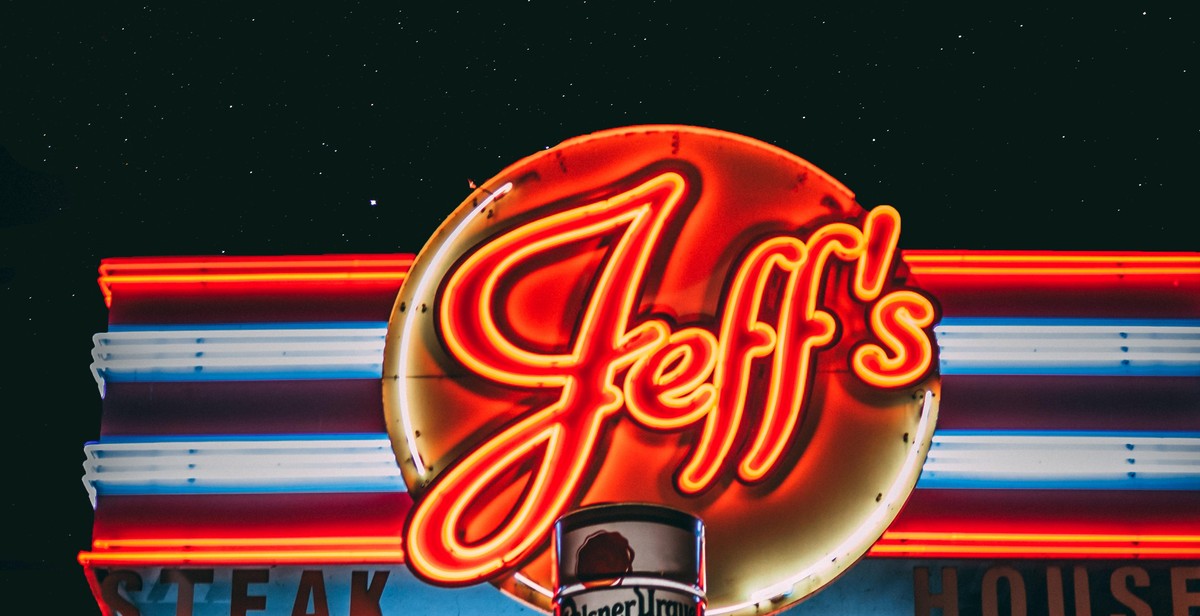How to Create a Typographic Logo: Designing a Memorable Brand Mark
When it comes to creating a brand identity, a logo is one of the most important things to consider. A logo is the visual representation of your brand, and it is the first thing that people will see when they come across your business. A well-designed logo can help your brand stand out in a crowded marketplace and make a lasting impression on your target audience.
One popular type of logo design is the typographic logo, which uses typography to create a unique and memorable brand mark. A typographic logo can be simple or complex, but it always focuses on the typography as the main element of the design.
The Benefits of a Typographic Logo
There are several benefits to using a typographic logo for your brand:
- Memorability: A typographic logo can be easily recognized and remembered by your target audience.
- Flexibility: Typographic logos can be easily adapted to different mediums and sizes without losing their impact.
- Timelessness: A well-designed typographic logo can stand the test of time and remain relevant for years to come.
How to Create a Typographic Logo
Designing a typographic logo requires careful consideration of several factors, including font selection, color scheme, and overall composition. Here are some steps to follow when creating a typographic logo:
- Research your target audience and competitors to understand their design preferences and ensure your logo stands out.
- Select a font that reflects your brand’s personality and values.
- Experiment with different typography styles and compositions to find the perfect design.
- Choose a color scheme that complements your brand and helps your logo stand out.
- Refine your design and test it across different mediums to ensure it looks great in all contexts.

What is a Typographic Logo?
A typographic logo, also known as a wordmark logo, is a type of logo design that uses text or typography as the primary element. It is a simple yet effective way of creating a brand mark that is memorable, distinctive and easy to recognize.
A typographic logo can be created using a variety of fonts, sizes, colors and styles. It can be designed to be bold, elegant, playful, or serious, depending on the brand’s personality and target audience.
Why Use a Typographic Logo?
There are several reasons why a brand might choose to use a typographic logo:
- Memorability: A typographic logo is often easier to remember than a complex symbol or graphic. Since it is based on text, it can be easily read and recognized by consumers.
- Flexibility: A typographic logo can be easily adapted to different mediums and sizes, making it a versatile option for branding.
- Simplicity: A typographic logo is often simpler and more straightforward than a complex symbol or graphic, making it easier to communicate a brand’s message and values.
- Timelessness: A well-designed typographic logo can stand the test of time and remain relevant for years to come.
Overall, a typographic logo can be a powerful branding tool for businesses looking to establish a strong and memorable brand identity.

Steps to Create a Typographic Logo
Designing a memorable typographic logo requires careful planning and execution. Here are the steps to follow:
Step 1: Research and Conceptualization
Before starting the design process, it’s essential to understand the brand’s values, target audience, and competition. Researching the industry and creating a mood board can help visualize the brand’s identity. This step helps to create a clear vision of the logo’s purpose, message, and tone.
Step 2: Font Selection
The font selection is critical in creating a typographic logo. The font should be legible, unique, and reflect the brand’s personality. It’s essential to find a font that stands out from the competition and is easy to read in different sizes and contexts. It’s also important to consider the font’s kerning, spacing, and alignment.
Step 3: Color Selection
Color plays a vital role in creating a memorable logo. The color palette should complement the brand’s personality, values, and target audience. It’s essential to select colors that resonate with the brand’s identity and differentiate it from the competition. The color palette should be consistent across all marketing materials, including the logo.
Step 4: Layout and Composition
The layout and composition of a typographic logo should be simple, balanced, and visually appealing. It’s essential to consider the logo’s placement, size, and orientation. The logo should be versatile and work well in different contexts, such as social media, print, and digital platforms.
Step 5: Refinement and Finalization
After creating the initial logo design, it’s essential to refine and finalize the logo. This step involves getting feedback from stakeholders, making necessary adjustments, and testing the logo in different contexts. It’s also essential to ensure that the logo is scalable and can be reproduced in different sizes and formats.
- Research and conceptualize the brand’s identity and values
- Select a font that is legible, unique, and reflects the brand’s personality
- Choose a color palette that complements the brand’s identity and values
- Create a simple, balanced, and visually appealing layout and composition
- Refine and finalize the logo by getting feedback, making adjustments, and testing it in different contexts
Following these steps can help create a memorable typographic logo that reflects the brand’s identity and values.

Tips for Creating a Memorable Typographic Logo
Designing a typographic logo can be a challenging task, especially when you want to create a memorable brand mark. Here are some tips to help you design a typographic logo that stands out and leaves a lasting impression:
Keep it Simple
One of the most important things to remember when designing a typographic logo is to keep it simple. A logo that is too complicated can be difficult to read and remember. Choose a font that is easy to read and keep the design minimalistic. Remember, less is often more when it comes to logo design.
Make it Unique
Your logo should be unique and stand out from your competitors. Look for inspiration from other designs, but don’t copy them. Instead, try to create something that is unique to your brand and that will help you stand out in a crowded market.
Ensure Readability
Readability is key when it comes to creating a typographic logo. Make sure that your font is easy to read and that the letters are spaced out properly. Avoid using complex fonts or fonts that are too small, as this can make your logo difficult to read.
Stay Consistent with Branding
Your logo should be consistent with your branding. Choose colors that match your brand’s color scheme and make sure that the font you choose matches the tone and personality of your brand.
Consider the Context
When designing a typographic logo, it’s important to consider the context in which it will be used. Your logo should look great on a variety of mediums, including business cards, websites, and social media platforms. Make sure that your logo is scalable and looks great in both large and small sizes.
- Keep it simple
- Make it unique
- Ensure readability
- Stay consistent with branding
- Consider the context
By following these tips, you can create a typographic logo that is memorable, unique, and represents your brand in the best possible way.

Examples of Memorable Typographic Logos
Here are some examples of typographic logos that have successfully captured the essence of the brand and become memorable:
1. Coca-Cola
The Coca-Cola logo is a classic example of a timeless and memorable typographic logo. The unique and distinctive script font has remained virtually unchanged since its inception in 1887. The logo has become synonymous with the brand and is instantly recognizable around the world.
2. FedEx
FedEx is another great example of a typographic logo that has become iconic. The logo features a bold and simple font with a hidden arrow between the “E” and “x,” which symbolizes speed and precision, two key attributes of the FedEx brand.
3. Google
Google’s logo is a great example of how a brand can use typography to create a playful and friendly image. The logo features a custom-designed font with vibrant colors that reflect the company’s fun and creative culture.
4. Airbnb
The Airbnb logo is a great example of how typography can be used to convey a brand’s values and personality. The logo features a custom-designed font that is warm and welcoming, reflecting the company’s commitment to creating a sense of belonging for its users.
5. Chanel
The Chanel logo is a classic example of how typography can be used to create a sense of luxury and sophistication. The logo features a simple, elegant font that has remained virtually unchanged since its inception in 1925.
6. BMW
The BMW logo is a great example of how typography can be used to create a sense of power and prestige. The logo features a bold, black font with a circular emblem that represents the company’s commitment to engineering excellence and innovation.
7. Netflix
The Netflix logo is a great example of how typography can be used to create a sense of entertainment and excitement. The logo features a custom-designed font that is bold and playful, reflecting the company’s commitment to providing high-quality entertainment to its users.
8. NASA
The NASA logo is a great example of how typography can be used to create a sense of exploration and adventure. The logo features a custom-designed font with a stylized emblem that represents the agency’s mission to explore the universe and expand human knowledge.
| Brand | Font | Message |
|---|---|---|
| Coca-Cola | Script font | Timeless and iconic |
| FedEx | Bold font with hidden arrow | Speed and precision |
| Custom-designed font with vibrant colors | Playful and friendly | |
| Airbnb | Custom-designed font | Warm and welcoming |
| Chanel | Simple, elegant font | Luxury and sophistication |
| BMW | Bold, black font with circular emblem | Power and prestige |
| Netflix | Custom-designed font | Bold and playful |
| NASA | Custom-designed font with stylized emblem | Exploration and adventure |

Conclusion
Creating a typographic logo can be a challenging task, but it is worth the effort. A well-designed logo can help your brand stand out in a crowded market and establish a strong visual identity. By following the steps outlined in this article, you can create a memorable brand mark that accurately represents your business and resonates with your target audience.
Key Takeaways
- Choose a font that reflects your brand’s personality and values
- Experiment with different typography techniques, such as kerning and tracking
- Consider the context in which your logo will be used and ensure it is legible at different sizes and on different backgrounds
- Use color to enhance your logo and create a more powerful visual impact
- Test your logo with your target audience to ensure it resonates with them
Final Thoughts
Remember, your logo is not just a visual representation of your brand; it is an essential part of your brand’s identity. It can communicate your values, personality, and unique selling proposition to your target audience. Therefore, it is crucial to invest time and effort into creating a logo that accurately represents your business and resonates with your customers. By following the tips and best practices outlined in this article, you can create a typographic logo that stands out from the competition and helps your brand achieve its marketing goals.
